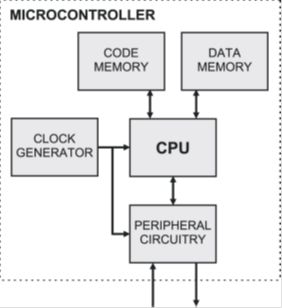SKEDSOFT
Overview of Control Computers
Huge, complex, and power-consuming single-room mainframe computers and, later, single-case minicomputers were primarily used for scientific and technical computing (e.g., in FORTRAN, ALGOL) and for database applications (e.g., in COBOL). The invention in 1971 of a universal central processing unit (CPU) in a single chip microprocessor caused a revolution in the computer technology.
Beginning in 1981, multi-boxes (desktop or tower case, monitor, keyboard, mouse) or single-box (notebook) microcomputers became a daily-used personal tool for word processing, spreadsheet calculation, game playing,m drawing, multimedia processing, and presentations.
When connected in a local area network (LAN) or over the Internet, these “personal computers (PCs)” are able to exchange data and to browse the World Wide Web (WWW). Besides these “visible” computers, many embedded microcomputers are hidden in products such as machines, vehicles, measuring instruments, telecommunication devices, home appliances, consumer electronic products (cameras, hi-fi systems, televisions, video recorders, mobile phones, music instruments, toys, air-conditioning).
They are connected with sensors, user interfaces (buttons and displays), and actuators. Programmability of such controllers brings flexibility to the devices (function program choice), some kind of intelligence (fuzzy logic), and user-friendly action. It ensures higher reliability and easier maintenance, repairs, (auto) calibration, (auto) diagnostics, and introduces the possibility of their interconnection—mutual communication or hierarchical control in a whole plant or in a smart house.
Embedded microcomputers are based on the Harvard architecture where code and data memories are split.
Firmware (program code) is cross-compiled on a development system and then resides in a nonvolatile memory. In this way, a single main program can run immediately after a supply is switched on. Relatively expensive and shock sensitive mechanical memory devices (hard disks) and vacuum tube monitors have been replaced with memory cards or solid state disks (if an archive memory is essential) and LED segment displays or LCDs.
A PC-like keyboard can be replaced by a device/function specifically labeled key set and/or common keys (arrows, Enter, Escape) completed with numeric keys, if necessary. Such key sets, auxiliary switches, large buttons, the main switch, and display can be located in water and dust resistant operator panels.
Progress in circuit integration caused fast development of microcontrollers in the last two decades. Code memory, data memory, clock generator, and a diverse set of peripheral circuits are integrated with the CPU to insert such complete single-chip microcomputers into an application specific PCB. Digital signal processors (DSPs) are specialized embedded microprocessors with some on-chip peripherals but with external ADC/DAC, which represent the most important input/output channel.
DSPs have a parallel computing architecture and a fixed point or floating point instruction set optimized for typical signal processing operations such as discrete transformations, filtering, convolution, and coding.

Telecommunications (e.g., bandpass filter and digital modulation/demodulation in mobile phones, communication transceivers, modems), and vector control of AC motors.
Mass production (i.e., low cost), wide-spread knowledge of operation, comprehensive access to software development and debugging tools, and millions of ready-to-use code lines make PCs useful for computing-intensive measurement and control applications, although their architecture and operating systems are not well suited for this purpose.